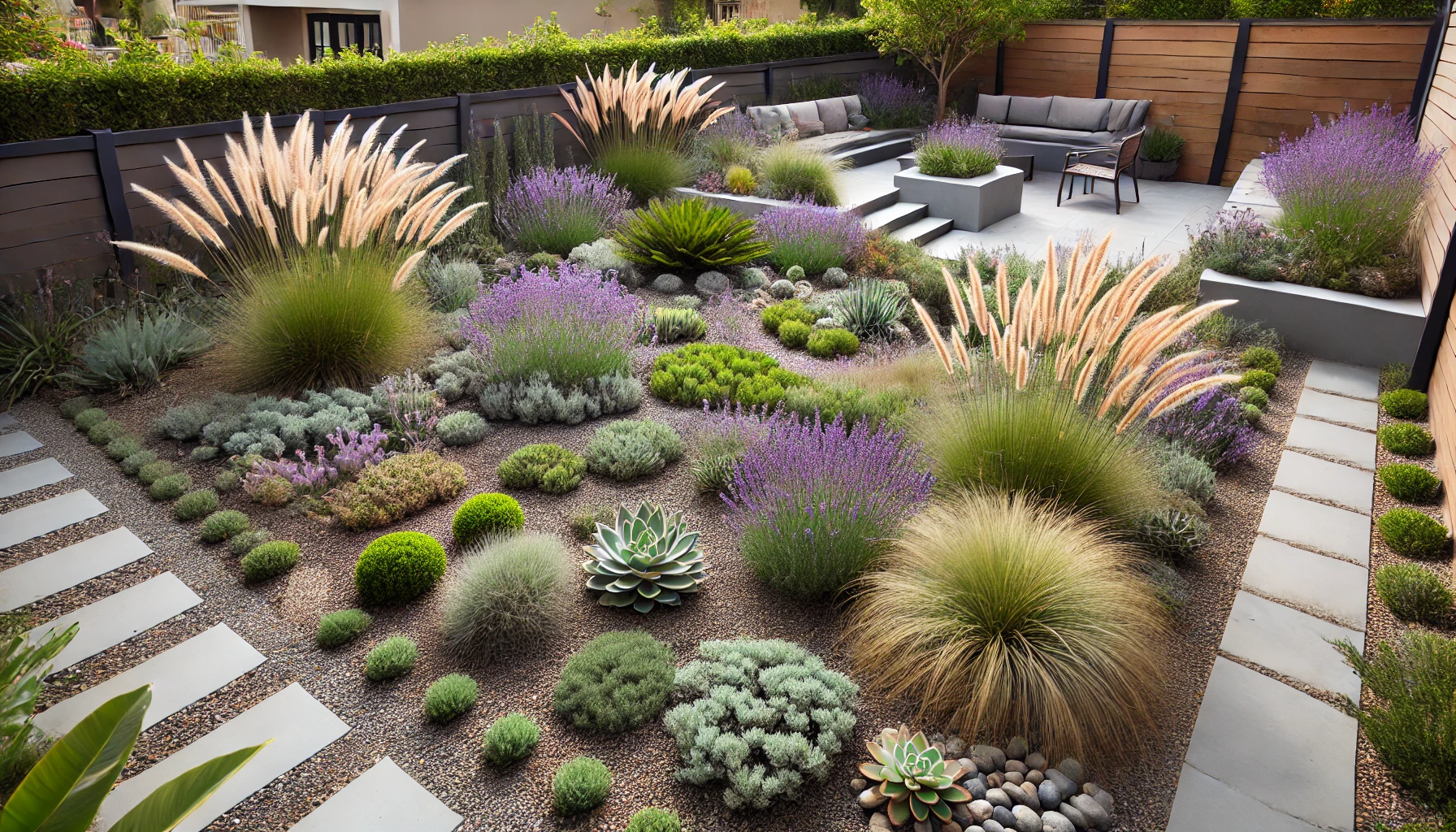Creating a beautiful garden doesn’t have to mean hours of constant upkeep. If you have a busy lifestyle or simply want to reduce the amount of time spent maintaining your outdoor space, a low-maintenance garden can be a perfect solution. With a little planning and the right plant choices, you can design a garden that’s both beautiful and easy to care for.
Step 1: Choose the Right Plants
One of the easiest ways to design a low-maintenance garden is to choose plants that require minimal care. Some plants are naturally hardy and can thrive without much attention, making them perfect for a low-maintenance garden.
- Drought-Tolerant Plants: Select plants that can withstand dry conditions. These plants require less watering and can thrive even during hot, dry spells. Examples include lavender, succulents, ornamental grasses, and certain varieties of roses.
- Perennials: Perennial plants come back year after year, so you won’t need to replant them each season. Choose hardy perennials like hostas, daylilies, and coneflowers for reliable, low-maintenance blooms.
- Native Plants: Native plants are adapted to your local climate and soil, making them easier to grow and maintain. They are also more resistant to pests and diseases, reducing the need for chemicals or constant attention.
Step 2: Use Mulch to Reduce Weeds and Retain Moisture
Mulch is one of the best tools for creating a low-maintenance garden. A layer of mulch not only improves the appearance of your garden, but it also helps reduce weeds and retain moisture in the soil.
- Weed Control: Mulch helps suppress weeds by blocking sunlight and preventing weed seeds from germinating. This means less time spent pulling weeds.
- Moisture Retention: Mulch helps keep the soil moist, reducing the need for frequent watering. It also helps regulate soil temperature, keeping it cooler in the summer and warmer in the winter.
- Organic Mulch: Consider using organic mulch like wood chips, straw, or compost. These materials break down over time, adding nutrients back into the soil.
Step 3: Simplify Garden Design
A low-maintenance garden often focuses on simplicity, using fewer elements that are easy to care for while still providing beauty and interest.
- Minimalist Design: Instead of overcrowding your garden with a variety of plants, focus on a few key features. A simple design with well-placed plants, paths, and seating areas can create a stunning effect without requiring constant upkeep.
- Ground Covers: Ground covers like creeping thyme, clover, or ivy can quickly spread and cover large areas, reducing the need for weeding and offering visual interest.
- Hardscaping Elements: Incorporate hardscaping features like stone paths, patios, or raised beds to reduce the amount of garden space that needs to be watered and maintained. These elements also add texture and structure to your garden.
Step 4: Use Low-Maintenance Lawn Alternatives
If you’re not a fan of mowing or caring for a traditional lawn, consider replacing it with low-maintenance alternatives that require less water and upkeep.
- Ground Covers: As mentioned earlier, ground covers can replace a lawn. Varieties like clover, creeping thyme, or even sedum create a lush, green carpet with little maintenance.
- Gravel or Mulch: Use gravel or mulch in areas that would traditionally be lawn to create a low-maintenance, visually appealing surface. These materials also help with drainage and prevent weed growth.
- Artificial Grass: In some areas, artificial grass can be a great alternative to a traditional lawn. It requires no mowing or watering and looks like a natural lawn all year round.
Step 5: Automate Irrigation
If watering is a concern, consider installing an irrigation system that automates the process. This will save you time and ensure your plants get the right amount of water without requiring manual intervention.
- Drip Irrigation: Drip irrigation is an efficient way to water plants. It delivers water directly to the roots, reducing evaporation and water waste. It’s a great option for low-maintenance gardens that don’t require daily watering.
- Smart Irrigation Systems: Modern smart irrigation systems can be set to water your garden automatically based on weather conditions, ensuring your plants receive optimal watering without wasting water.
Step 6: Regular Maintenance Tips
Even low-maintenance gardens require some care, but the tasks are minimal and easy to keep up with.
- Deadheading: Remove spent flowers to keep your garden looking tidy and encourage new blooms.
- Pruning: Prune dead or damaged branches regularly to keep your plants healthy and encourage new growth.
- Weeding: While mulch helps suppress weeds, a quick weed check every few weeks will ensure that your garden stays neat and weed-free.
Enjoy a Beautiful Garden with Less Effort
Designing a low-maintenance garden is all about making thoughtful choices and simplifying your space. By selecting easy-to-care-for plants, using mulch to retain moisture and reduce weeds, and incorporating hardscaping elements, you can create a beautiful garden that requires minimal effort. With a little planning and smart choices, your garden can thrive with little maintenance, leaving you more time to enjoy it.
